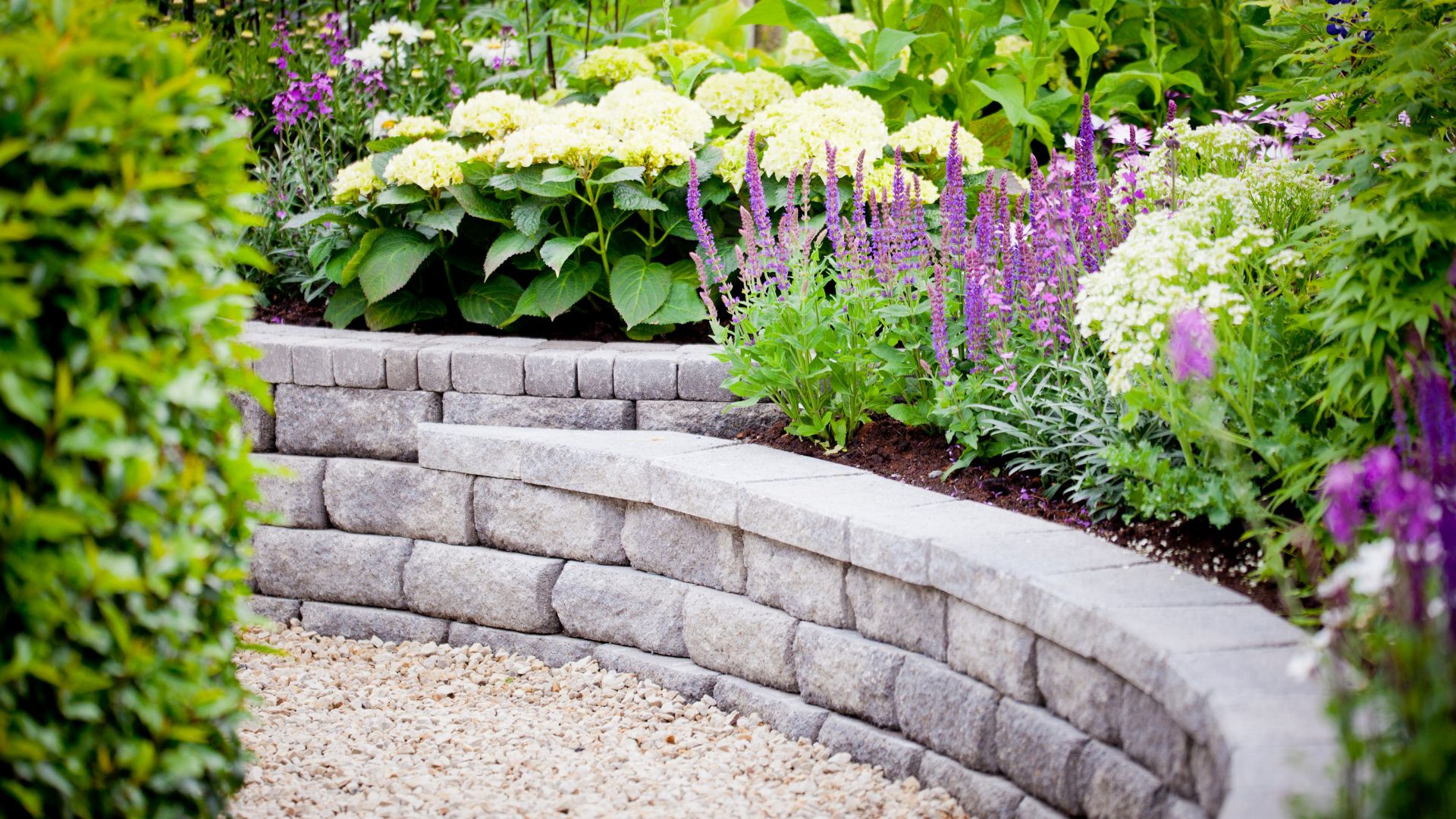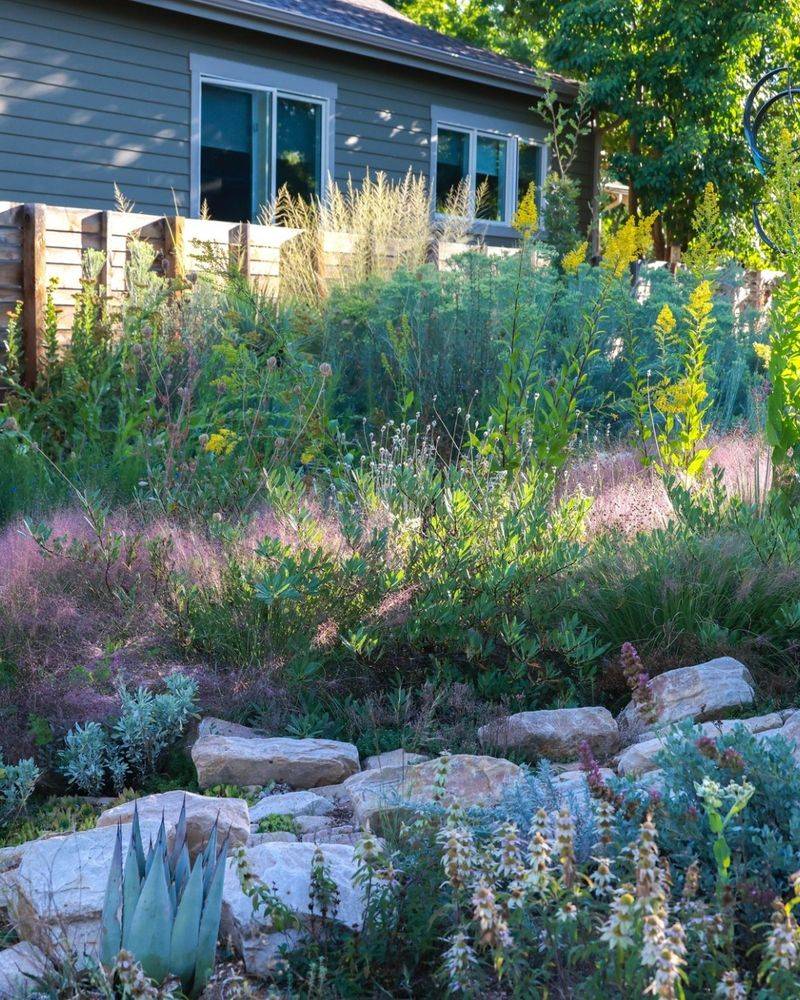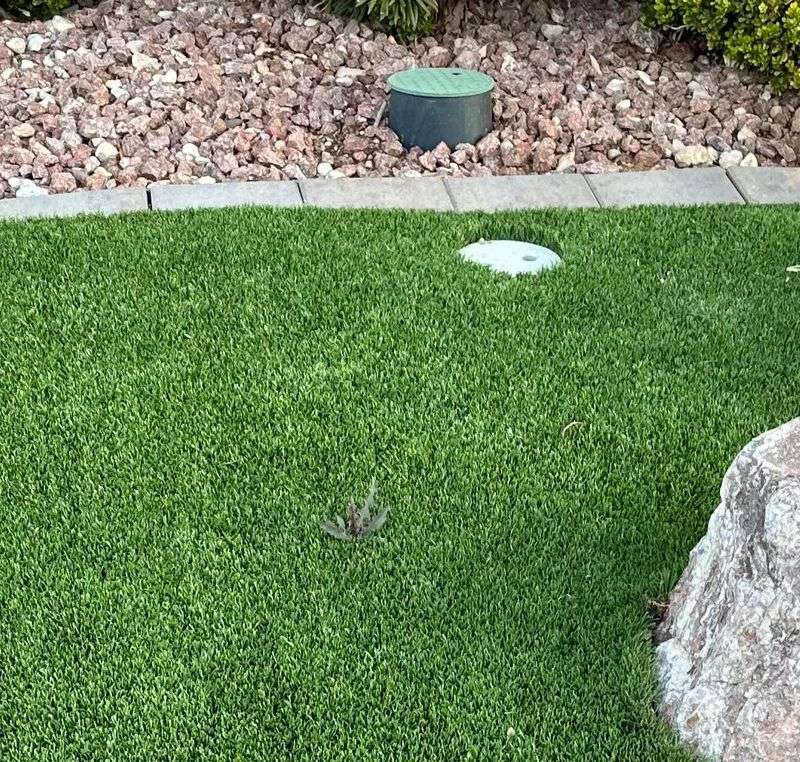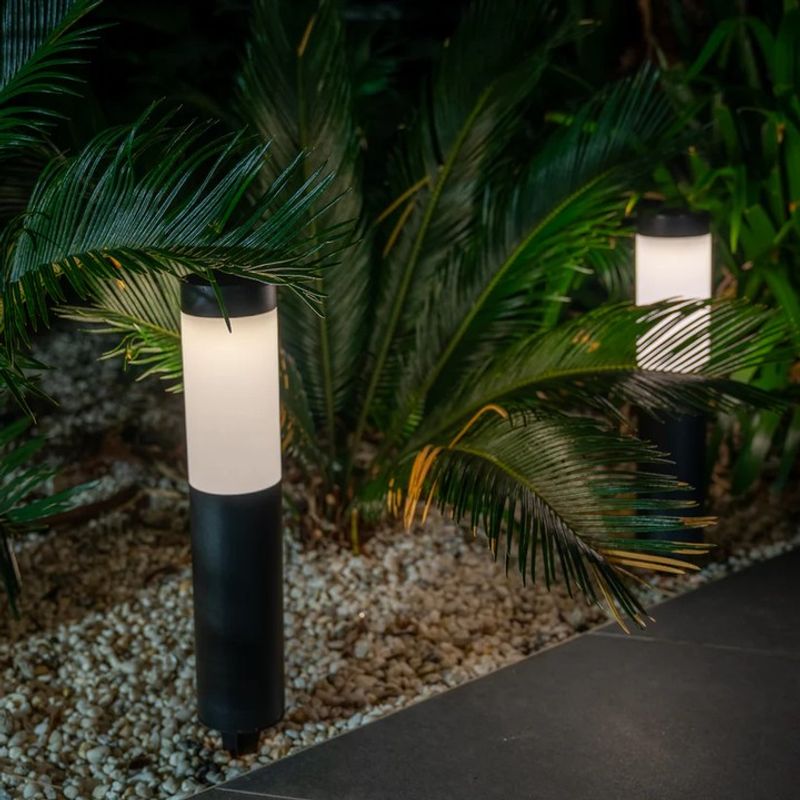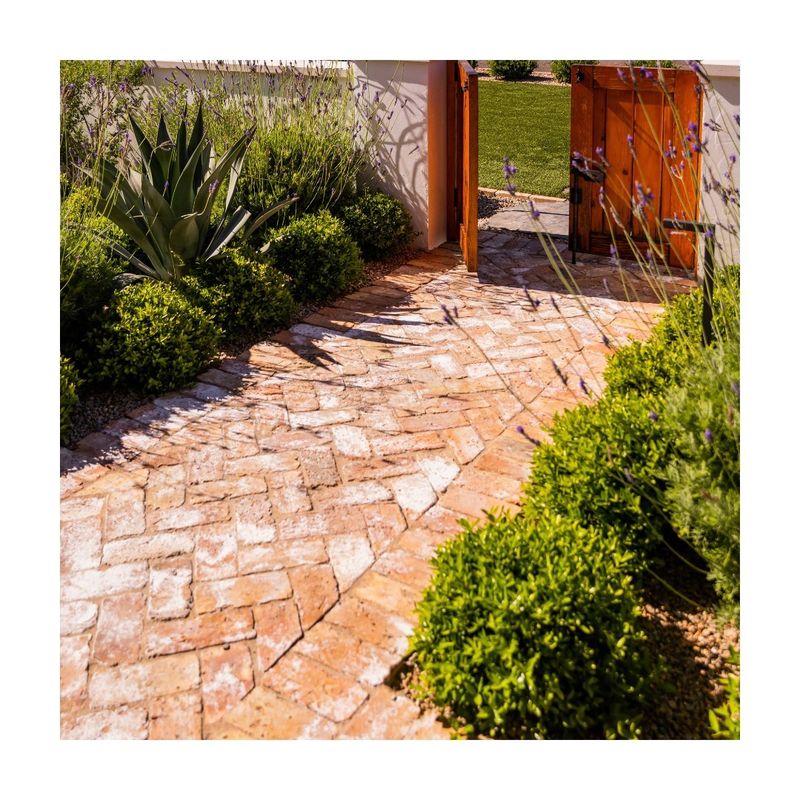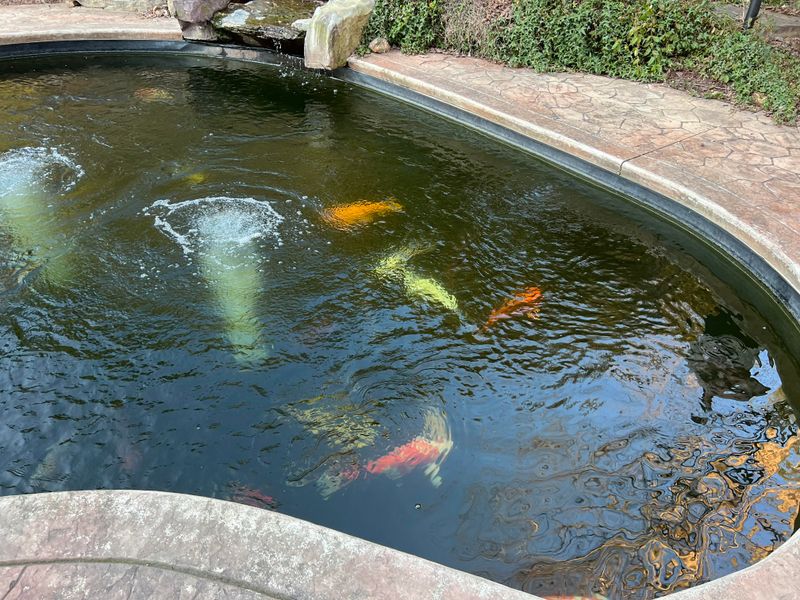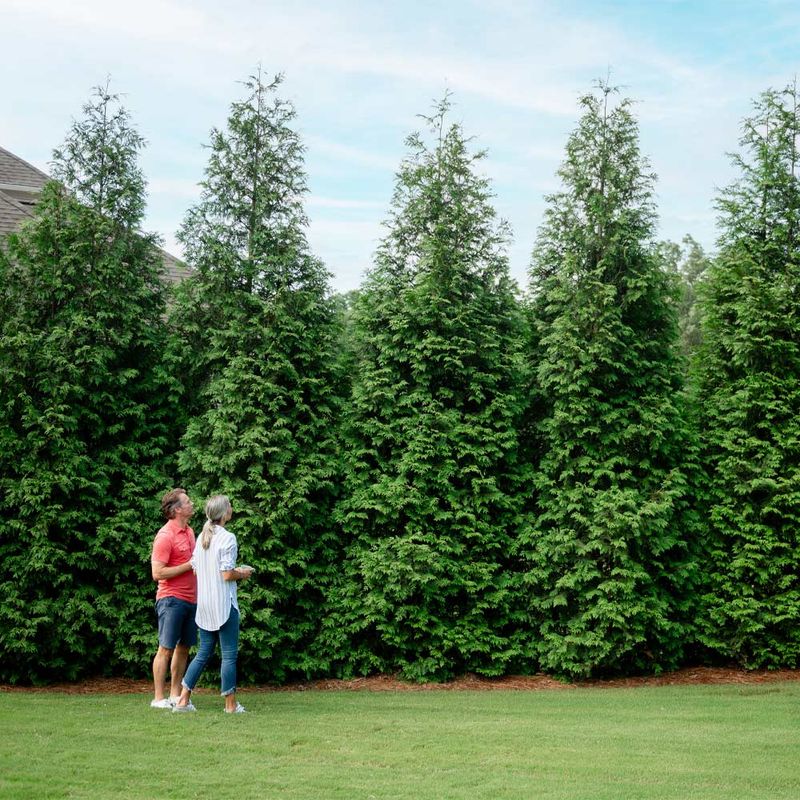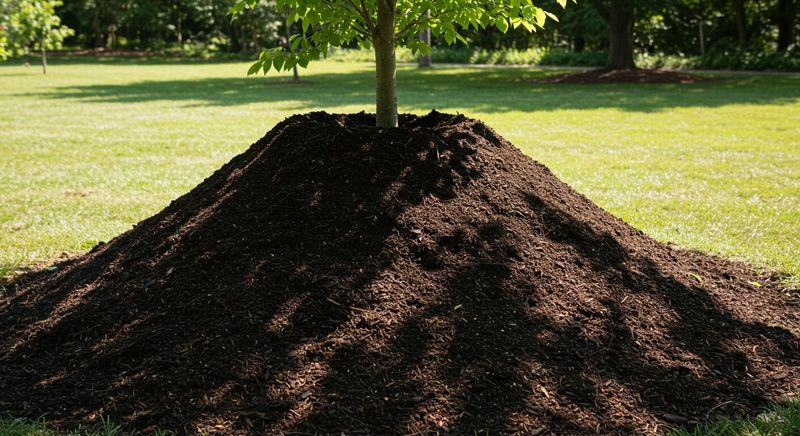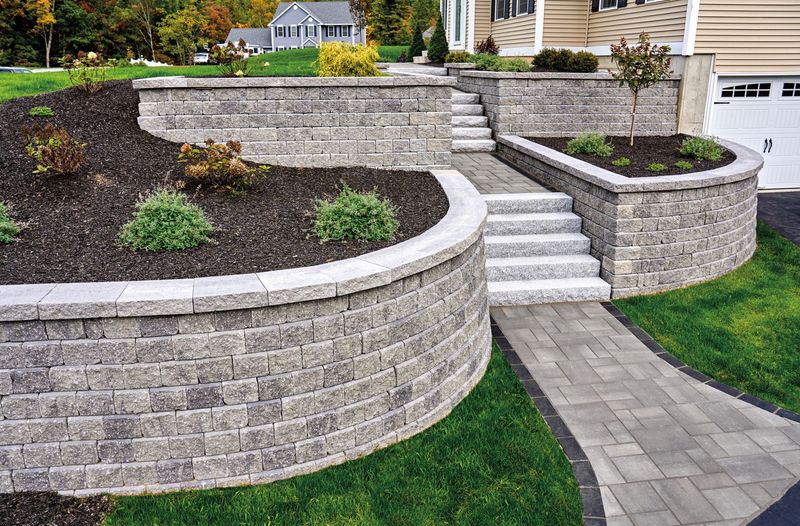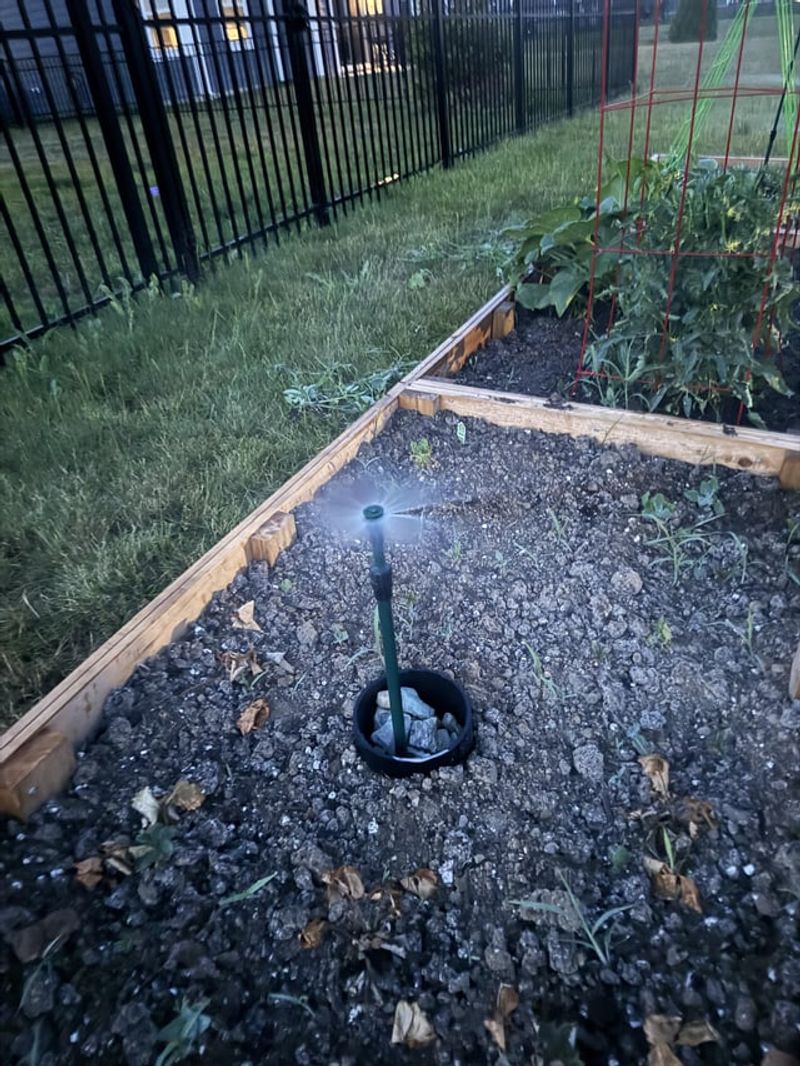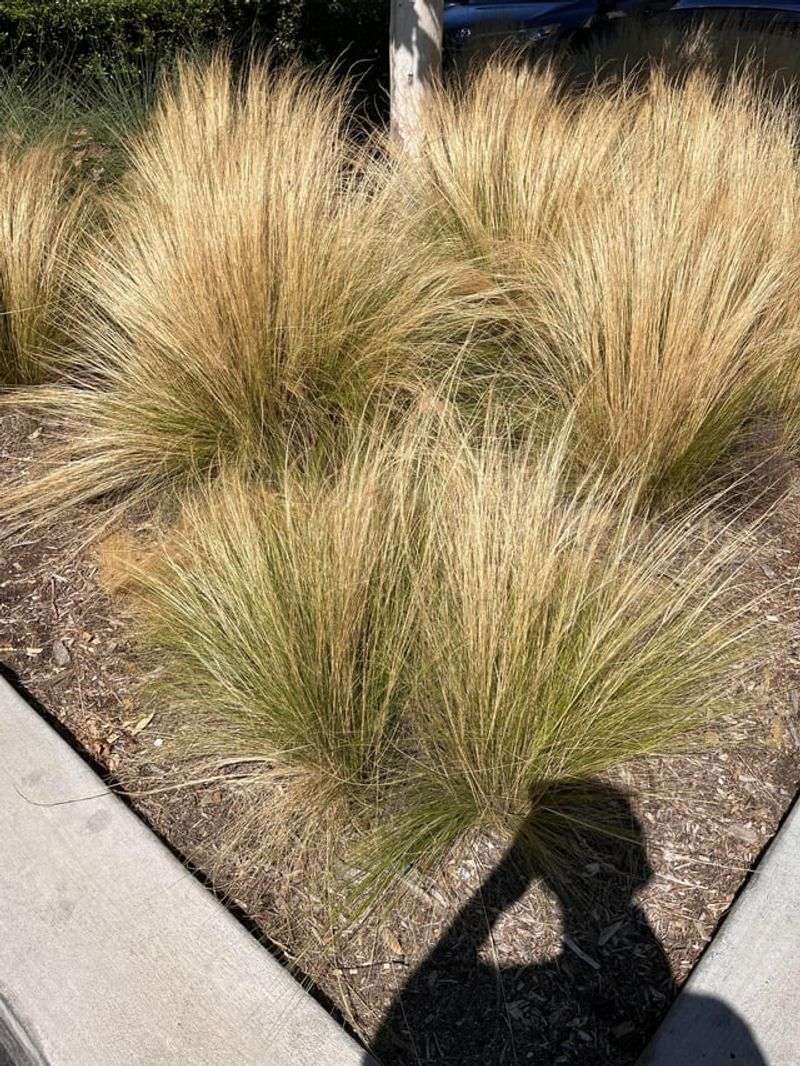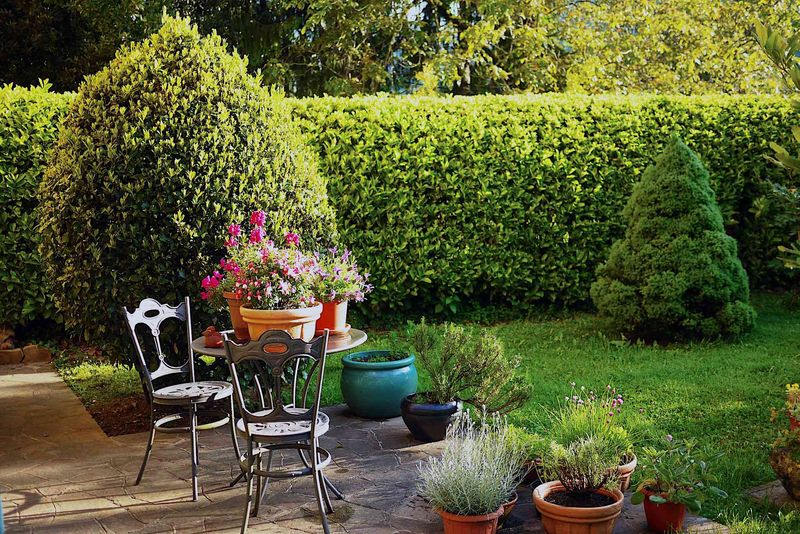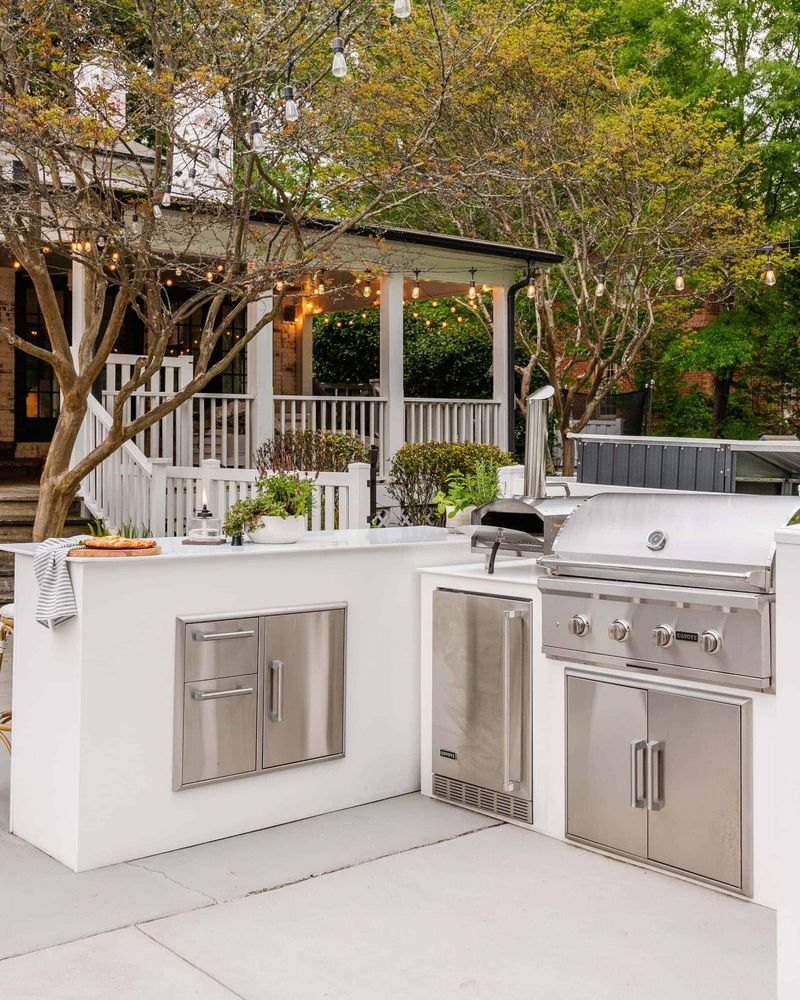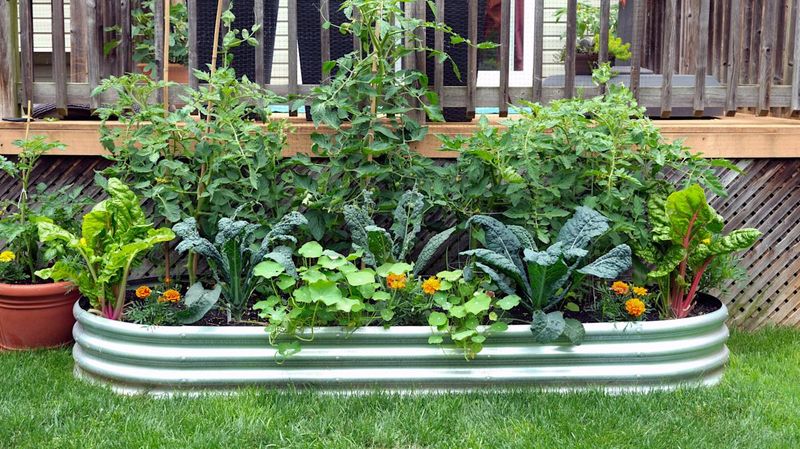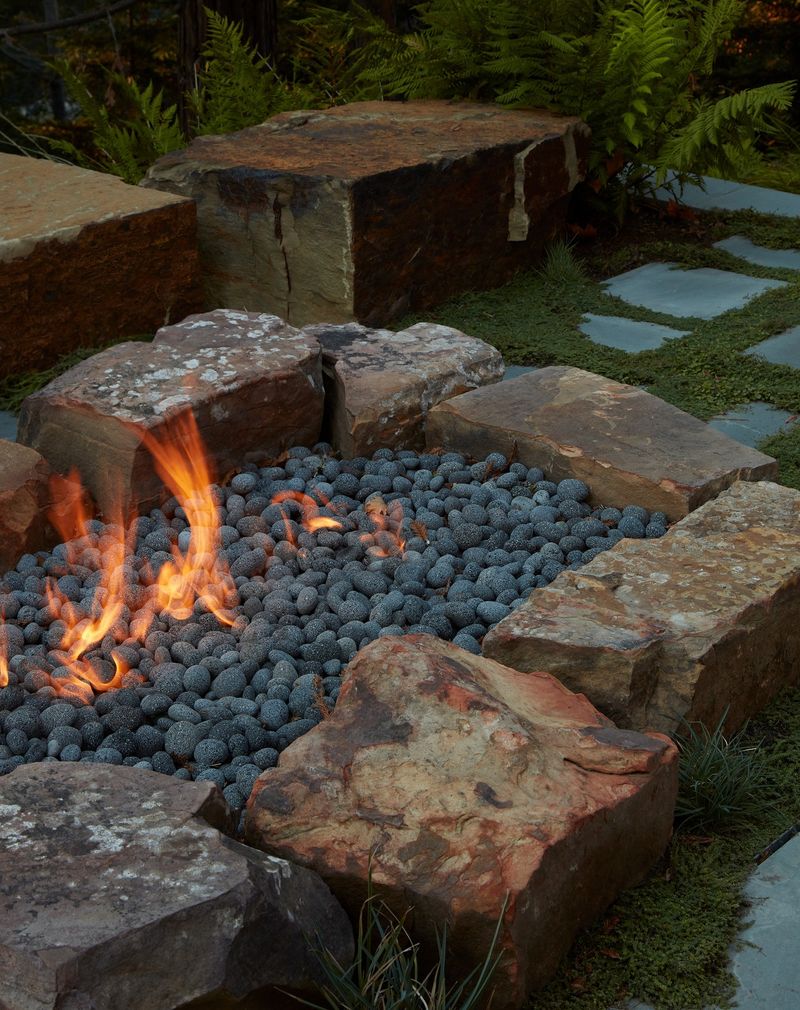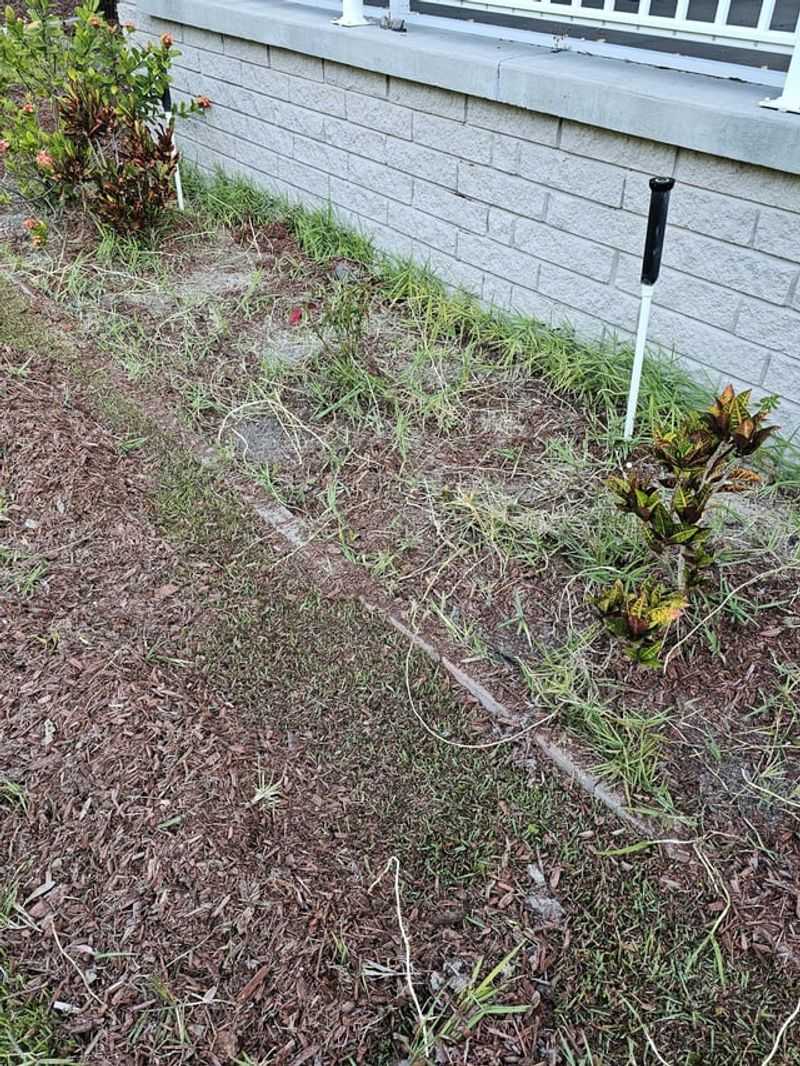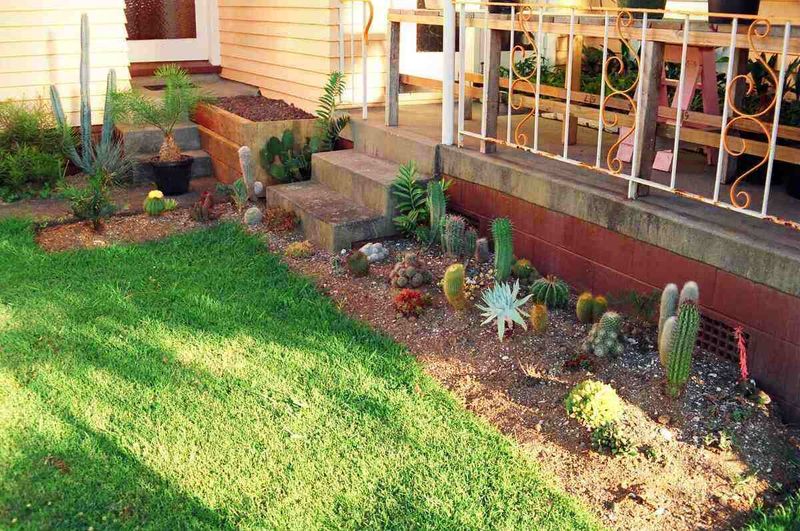I’ve definitely fallen for a few pretty landscaping trends that seemed harmless at first—until they turned into pricey headaches a couple of seasons later. That sleek look or clever layout isn’t always worth the long-term hassle.
If you’re planning a yard makeover, it’s worth pausing before copying that Pinterest-perfect idea. Some of the most popular choices today can lead to big problems tomorrow.
1. Water Features That Drain More Than Water
Elaborate fountains and ponds create that resort-like atmosphere everyone wants, but the maintenance reality hits hard. Pumps break down, algae takes over, and electricity bills climb steadily upward.
I installed a small fountain three years ago and now spend nearly every weekend cleaning it or fixing something. The repair costs alone could have funded a vacation!
Instead: Choose a simple, solar-powered birdbath or a dry creek bed with decorative stones. You’ll get visual interest without the constant maintenance headaches and ongoing expenses.
2. Non-Native Plant Obsessions
Exotic, non-native plants might turn heads, but they often require excessive water, fertilizer, and protection from local conditions. Many struggle to survive without constant intervention, draining both your time and resources.
The tropical plants I bought for our Pennsylvania garden looked stunning for two months, then promptly died after the first cold snap despite my expensive winterizing efforts.
Instead: Embrace native plants adapted to your local climate and soil. They thrive with minimal intervention, support local wildlife, and typically cost far less to maintain over time.
3. Artificial Turf Troubles
Synthetic grass promises a perfect lawn without mowing, but reality falls short. It absorbs heat to uncomfortable levels, requires surprising amounts of cleaning, and typically needs complete replacement every 8-15 years.
The artificial turf my neighbor installed looked perfect initially. Now five years later, it’s developing worn paths and collecting debris that won’t wash away even with his pressure washer.
Instead: Consider drought-tolerant ground covers like clover, microclover, or native grasses that stay naturally green with minimal water and maintenance while allowing natural cooling.
4. Overdoing Outdoor Lighting
Extensive landscape lighting creates dramatic nighttime scenes but comes with significant downsides. The electrical work is expensive to install, fixtures deteriorate outdoors, and monthly energy costs add up quickly.
Those dozens of pathway lights and uplights can also contribute to light pollution that disrupts local wildlife and natural rhythms. My elaborate system needed rewiring after just three seasons.
Instead: Use strategic solar lighting at key points like entrances and pathways. Choose high-quality, weather-resistant fixtures and consider motion sensors for security areas to minimize energy use.
5. Intricate Paver Patterns
Complex paver designs with multiple colors and patterns look spectacular initially. However, when pavers inevitably shift or crack, repairs become nightmarish because finding exact replacements years later is nearly impossible.
My elaborate herringbone pattern now has three damaged sections I can’t match. The manufacturer discontinued that specific color blend the year after installation.
Instead: Choose simple paver designs in timeless colors with readily available options. Consider permeable pavers that allow water drainage, reducing puddles and ice formation that cause damage.
6. Oversized Koi Ponds
Large koi ponds make stunning focal points but create ongoing financial commitments. Between specialized filtration systems, winter preparations, predator protection, and fish healthcare, they become part-time jobs with full-time expenses.
The pump for my neighbor’s pond costs nearly $90 monthly in electricity alone. When raccoons discovered his pond, he spent thousands more on protective measures.
Instead: Consider a small reflecting pool or rain garden that captures natural precipitation. These provide visual water elements without the biological complexities and expensive infrastructure of fish habitats.
7. Privacy Walls Of Fast-Growing Trees
Leyland cypress and other rapid-growing trees create quick privacy screens but develop shallow root systems that make them vulnerable to toppling in storms. Their aggressive growth means constant pruning to prevent them from overwhelming your space.
The row of fast-growing trees I planted along my property line looked great until a windstorm uprooted three of them onto my roof. The repair costs far exceeded what I’d saved by choosing “budget” privacy options.
Instead: Plant diverse native shrubs and trees with different growth habits. Creating layered privacy with multiple species provides better stability and protection against diseases that could wipe out a single-species barrier.
8. Massive Mulch Volcanoes
Piling mulch high around tree trunks might look tidy to some, but these “mulch volcanoes” slowly kill trees by encouraging trunk rot and improper root development. The damaged trees eventually require costly removal and replacement.
Walking through my neighborhood, I count at least twelve trees slowly dying from this practice. One homeowner just spent $3,000 removing a mature maple that succumbed to the fungal issues caused by years of over-mulching.
Instead: Apply a thin layer of mulch (2-3 inches) in a wide circle around trees, keeping it several inches away from the trunk. This proper technique supports tree health while still providing weed suppression benefits.
9. Expansive Stone Retaining Walls
Massive stone retaining walls create dramatic level changes but frequently develop drainage problems. Without proper engineering, they can bulge, crack, or completely fail, requiring expensive rebuilding.
The previous owners of my home installed a gorgeous 6-foot retaining wall without drainage provisions. Ten years later, I’m facing a $15,000 reconstruction project because water pressure has pushed sections outward.
Instead: Consider terraced smaller walls with proper drainage systems, or explore natural-looking berms and slopes reinforced with deep-rooted native plants that naturally prevent erosion without rigid structures.
10. Irrigation Systems Without Smart Controls
Basic irrigation systems water on schedule regardless of weather conditions, leading to water waste and higher utility bills. They also frequently develop leaks underground that go unnoticed until dramatic spikes in water bills appear.
My standard sprinkler system ran during a three-day rainstorm last spring. The following month’s water bill nearly caused me to faint!
Instead: Upgrade to smart irrigation controllers with rain sensors and soil moisture monitors. These systems adjust watering based on actual conditions, often reducing water usage by 30-50% while keeping plants healthier.
11. Invasive Decorative Grasses
Ornamental grasses like pampas grass and Japanese blood grass look spectacular but many varieties quickly become invasive nightmares. Their spreading nature means they’ll soon overtake gardens and natural areas, requiring exhausting removal efforts.
The previous homeowner planted miscanthus along our property edge. Seven years later, I’m still digging out runners that have invaded every flower bed within 50 feet.
Instead: Choose native ornamental grasses with controlled growth habits. Species like little bluestem or prairie dropseed provide similar visual appeal without the aggressive spreading that leads to costly removal projects.
12. Formal Hedges Requiring Constant Shaping
Precisely trimmed boxwood and privet hedges create that manicured estate look, but demand frequent trimming to maintain their shape. Miss a few sessions and they quickly become overgrown and difficult to restore.
My perfectly squared boxwood hedge needs trimming every three weeks during growing season. When I broke my arm last summer, two months without maintenance meant paying a professional $600 to restore their shape.
Instead: Select naturally compact shrubs that maintain an attractive form with minimal pruning. Varieties like dwarf Japanese holly or compact inkberry naturally grow in dense, rounded shapes requiring only annual light pruning.
13. Outdoor Kitchens In Unsuitable Climates
Elaborate outdoor kitchens with built-in appliances make sense in mild climates, but in areas with harsh winters or extreme weather, they deteriorate quickly. Freezing and thawing cycles crack countertops while moisture damages electrical components.
Even with covers and winterizing, my cousin’s outdoor kitchen in Michigan developed serious issues after just two seasons. The repair costs were nearly half the original installation price.
Instead: Consider portable, high-quality grilling stations and prep carts you can move to protected areas during harsh weather. This flexibility extends their lifespan while still providing outdoor cooking functionality.
14. Over-Planted Perennial Beds
Densely packed perennial gardens look lush initially but create maintenance headaches as plants compete for resources. Overcrowded conditions lead to weak growth, increased disease problems, and constant division needs.
The previous homeowner crammed dozens of varieties into our front garden. Now I spend weekends dividing overcrowded clumps while treating the fungal issues that spread through the stressed plants.
Instead: Space perennials according to their mature size, even if the garden looks sparse initially. Choose quality over quantity, allowing each plant proper air circulation and room to reach its full potential without constant intervention.
15. Trendy But Impractical Fire Features
Dramatic fire bowls and tables create ambiance but often come with practical limitations. Many require specialized fuel, develop rust issues in damp climates, and become unusable during burn restrictions.
My elaborate fire feature sits unused most summers due to our county’s frequent fire bans during dry periods. The propane costs make casual use expensive, and winter moisture has damaged the ignition system twice.
Instead: Consider a simple stone fire pit that can burn natural wood when permitted. These basic designs work with multiple fuel types, require minimal maintenance, and typically comply with more fire restriction scenarios.
16. Extensive Landscape Fabric
Landscape fabric seems like a permanent weed solution but creates long-term problems. It degrades into shreds that contaminate soil, prevents beneficial earthworm activity, and eventually allows weeds to grow on top of it anyway.
Removing the deteriorated landscape fabric from my garden beds required days of painstaking work. The soil underneath was compacted and lifeless compared to my untreated beds.
Instead: Use natural mulch applied annually directly to soil. This approach suppresses weeds while simultaneously improving soil health as the mulch breaks down, creating a cycle of improvement rather than degradation.
17. Oversized Lawns In Drought-Prone Areas
Expansive grass lawns in arid regions require enormous amounts of water to stay green. Water restrictions often leave these lawns brown and unsightly despite the significant investment in installation and maintenance.
During our region’s three-year drought, my neighbor’s water bill for lawn irrigation reached nearly $500 monthly. Despite this expense, water restrictions meant his lawn still developed large brown patches.
Instead: Embrace xeriscaping with drought-tolerant plants, decorative gravel, and designated activity areas of hardy groundcover. This approach reduces water usage by up to 75% while providing year-round visual interest without the constant battle against climate.

